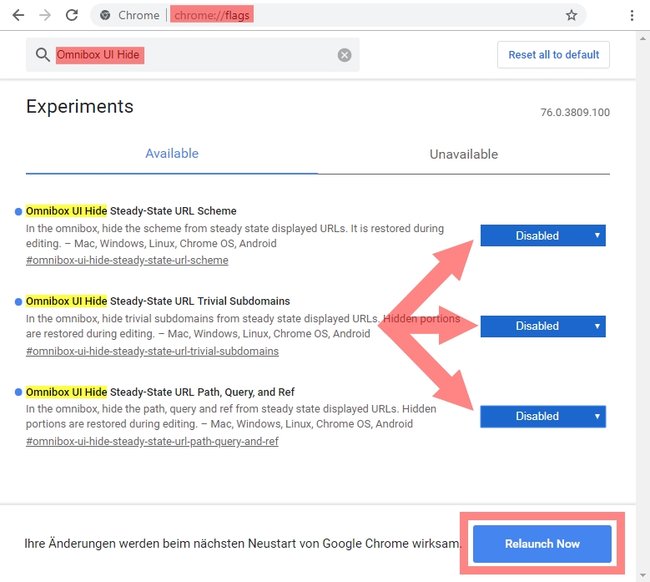Chrome: Show entire URL with “https://www”.
By default, the Chrome browser hides the “http” and “https” protocols and the “www” subdomain. Even though most people no longer type these to get to a web page, in some situations it can be helpful to keep seeing them. You can find out here how to get the complete URL displayed again in the address bar in Chrome.
Version:107.0
Languages:German
License:freeware
Platforms:Windows Vista, Windows 7, Windows 8, Windows, Windows 10
Contents
Show full URL
Current version
To be able to see all components of a URL again in the address bar, simply proceed as follows:
- Opens the Chrome browser.
- Makes a right click in the address line.
- in the context menu you now activate the option “Always show full URLs”.
Image source: GIGA
Old version
If you have to use an older version of Chrome that doesn’t have the “Always show full URLs” feature, you can display the full URL again using the experimental “Flags” settings as follows:
- Opens the Chrome browser.
- Type in the address bar
chrome://flagsand confirmed with the Enter key. - Now enter the Flags Search
Omnibox UI Hidea. - In the results you choose from the drop down menu the option Disabled instead of default off to disable partial URL hiding.
Image source: GIGA - Then click on the button at the bottom right Relaunch Nowto restart Chrome with the changed settings.
- After the restart, the accessed websites should be displayed normally again in the Chrome browser with “http(s)://www.” or their respective protocol and sub-domains.
![Chrome complete URL]()
Image source: GIGA
View full URL on mobile
There is currently no way to always see the URL in full in the mobile version of Chrome. But you can always manually look at the complete URL, proceed as follows:
-
- Opens the desired tab in the Chrome app.
- Types in the address line on the Symbol to the left of the URLin most cases this is a lock or a warning triangle.
Image source: GIGA - Now type in context menu at the top to the website addressto see the full URL.
Image source: GIGA
background
You can quickly tell whether a website uses the encrypted Hypertext Transfer Protocol Secure (HTTPS) by looking at the last letter of the protocol – but if this is not specified in the address line, you should first check this before you enter sensitive data such as payment data on the website website enters.
Even the sub-domain “www”, which is often neglected these days and which serves to identify a web server, can in rare cases be more important than you think. Especially on websites with several sub-domains, it can happen that what appears to be the same URL leads to different websites. So could http://de.beispiel.org lead to a different website than http://www.de.beispiel.org.
For many, this is reason enough to want the old view in the Chrome browser back with the full URL. But other components of web addresses are also “hidden” by the Chrome browser, which can give the expert some information about the content or structure.
Don’t want to miss any more news about technology, games and pop culture? No current tests and guides? Then follow us
Facebook
or Twitter.







